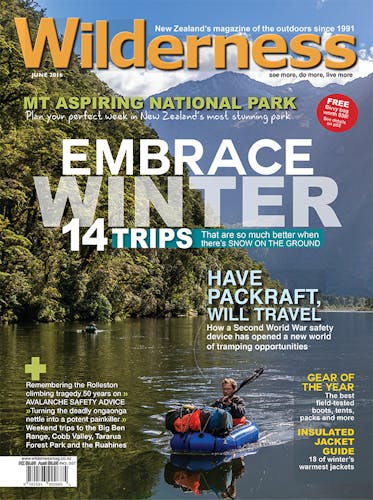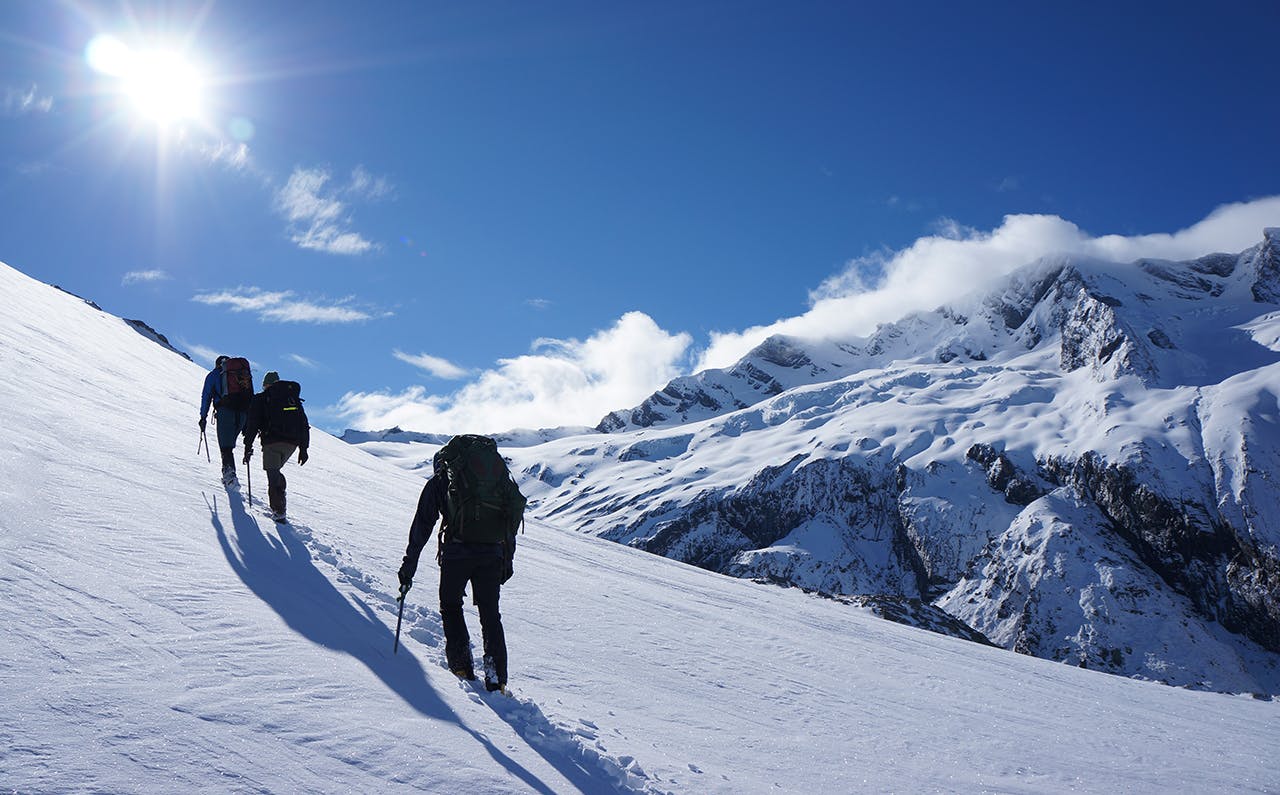Avalanche awareness guru Whitney Thurlow shares his tips for avoiding avalanche terrain this winter
Tramping during the winter months is becoming increasingly popular in New Zealand. No crowds (no one at all usually!) and stunning snow-covered peaks can make for fantastic hiking. Hit the right weather and you can have a wilderness experience like no other.
However, the death of two trampers in July 2015 on the popular Kepler Track highlights the insidious nature of avalanches on New Zealand tracks. While accidents due to falls or crossing rivers are much more likely, under certain conditions, an avalanche can be a major concern. Here’s how to make sure you have one less thing to worry about on your winter tramp.
Ask questions. Check avalanche.net for avalanche conditions. It may not feature the exact location you plan to go to, but if you see many warnings of ‘Considerable’ or higher, it is best to stay away from the snow. It’s also a good idea to ask questions at the local DOC office to see if they have any advice.
Has there been a lot of recent snow? This may not be as simple as it seems since it rarely snows to the valley floor, where you’ll be trying to make a decision. But higher up, where you’ll be going, there could be a dangerous amount of new snow. Plan on it being six degrees colder for every 1000m you climb. So, if you are at a hut at 400m and it rains all night with the temperature at 4℃, you can count on a lot of new snow at 1000m. If your intended route takes you that high, it may be best to change plans. Remember, the avalanche start zones will be even higher, and with wind loading there could be metres of new snow from one rain event.
It’s not the fall, it’s the landing. Surprisingly enough, getting buried by snow is probably not your biggest worry when it comes to an avalanche. If a relatively small avalanche pushes you off a cliff, it can be small consolation that it was only minor in size. Steep gullies, rocks, trees and other terrain traps can be deadly. Always consider the ‘what if’ in the risk equation.
Plan your route for winter conditions. Most routes that involve a high pass – 1200m or higher – will be impassable from July to late October unless you have special equipment such as skis, snowshoes or crampons. Since most trampers won’t be going this high, and snow deep enough to avalanche rarely falls below 1000m, there is actually a pretty narrow band of elevation for trampers to worry about. Plan your winter routes to avoid high passes or alpine terrain. If you are going to higher elevations, don’t commit yourself to having to get over a pass to get to your destination. Pick routes where you travel high for the day and return the same way. That way you can turn around if conditions are not right.
Avalanche transceivers. Don’t rent an avalanche transceiver unless everyone in your party is trained in avalanche rescue. Proper avalanche rescue takes practise. Most people will need to own their own transceiver in order to be properly familiar with it. If you are not trained in its use, then don’t think that having a transceiver will make you any safer. True, it will make it easier for the rescue services to find your body, but they would much rather not have to look for you in the first place. Take an avalanche course and learn the basics before you make the decision to travel in the high mountains in winter.
– Whitney Thurlow runs the avalanche awareness programme for Aspiring Guides






